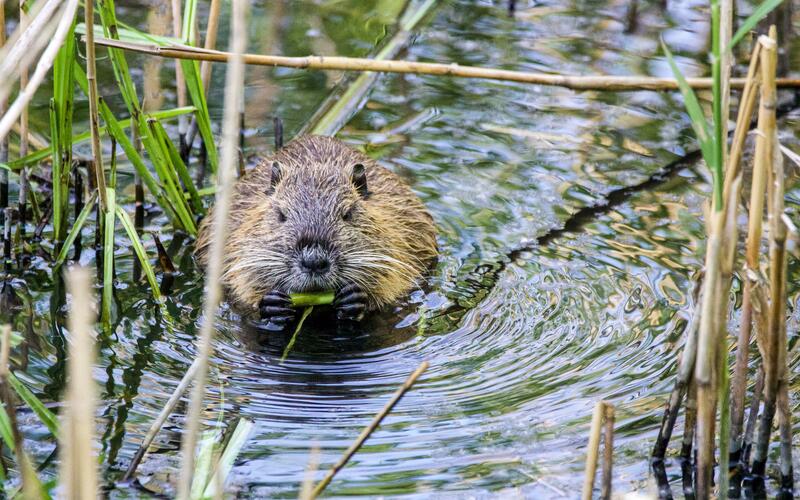Beavers can help protect streamside vegetation from wildfires

Beavers can help protect streamside vegetation from wildfires
Wildfires are becoming increasingly common and more destructive throughout the western United States. New research shows that beaver dams can help streamside vegetation stay green during wildfires.
Fairfax, Emily, and Andrew Whittle. 2020. “Smokey the Beaver: Beaver-Dammed Riparian Corridors Stay Green during Wildfire throughout the Western United States.” Ecological Applications 30 (8): e02225. https://doi.org/10.1002/eap.2225.
Wildfires are a common hazard in many areas of the United States, particularly in the West. Due to increasingly hot and dry conditions, fires are becoming larger, longer-lasting, and more frequent - putting communities, land, and property at risk. In addition to causing physical destruction, wildfires can increase the risk of flooding and landslides, pollute air and water, and destroy cultural resources and wildlife habitat. Scientists and land managers are seeking solutions to manage the impacts of these increasingly destructive wildfires – and some of these solutions come in surprising shapes and sizes. A recent study published in Ecological Applications explains how beavers can play a role in making western landscapes more resilient to wildfires.
The study investigates riparian corridors, the vegetated strips of land that border rivers, streams, and other bodies of water. Characterized by their unique soils and vegetation, these corridors are an important component of healthy freshwater ecosystems. They help stabilize stream banks, protect water quality, and provide prime habitat for beavers and other wildlife. In return, beavers help maintain riparian corridors. When beavers build a dam across a stream, it slows the water flow, causing a pond to form behind the dam. They then dig channels that extend from the bottom of the pond into the adjacent landscape, which allows water to spread out into and hydrate the soils and vegetation in the surrounding area.
The mutually beneficial relationship between beavers and riparian zones inspired Dr. Emily Fairfax of California State University, Channel Islands and Dr. Andrew Whittle of the Colorado School of Mines to investigate if beaver dams can protect riparian areas from wildfire. To best understand how damage from widespread wildfires can be mitigated, they analyzed a large range of fire impacted landscapes. These included five large wildfire areas in Colorado, California, Oregon, Idaho, and Wyoming with a mix of shrubland and forest sites, ranging from unburned to highly burned. The researchers used satellite imagery and data called Normalized Difference Vegetation Index (NDVI), a method of estimating vegetation health through measurements of the greenness of the plants. By comparing the NDVI data from the years before, during, and after a fire, they measured how wildfires impacted the health of riparian vegetation. They then compared sections of streams dammed by beavers to those without beaver activity.
Their findings showed that beaver dams play a significant role in protecting riparian ecosystems during wildfires across various landscape types and burn severities. Results showed that within areas impacted by wildfires, stream sections with beaver dams had healthier, greener vegetation on average than streams sections without beaver dams. Protecting riparian vegetation during fires is crucial for maintaining resilient ecosystems. It also provides habitat to protect wildlife unable to flee from fire zones.
The number of beavers in North America declined significantly in the past few centuries due to the fur trade and habitat loss. Today, while there is a growing interest in reintroducing beavers for beaver-based stream restoration, many people view them as pests that can cause unwanted flooding and infrastructure damage. However, as the results of this study show, beaver activity provides a glimmer of hope in the face of the devastating impacts of wildfires. Educating policymakers about the active role beavers play in protecting streamside ecosystems from wildfires can benefit beavers and Western ecosystems alike.




